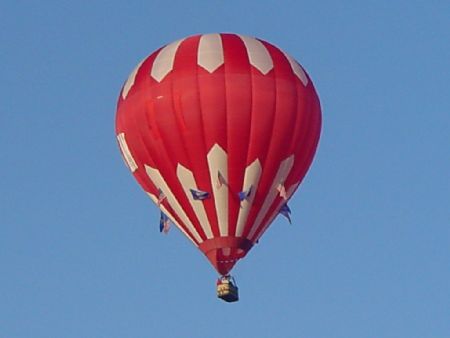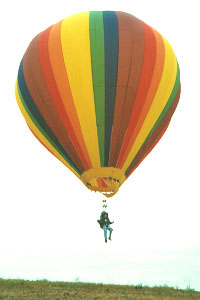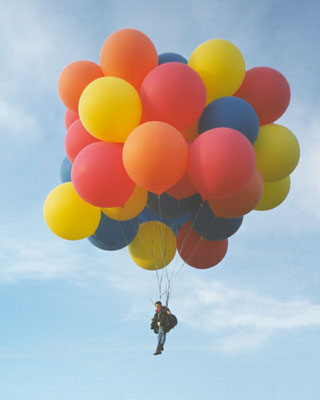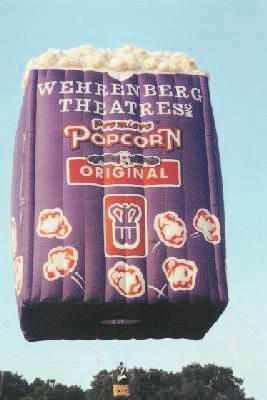 Ballooning Facts
Ballooning Facts
The Basics
Shapes & Purposes
There are two basic shapes of hot air balloons. These are conventional and special shapes. Convential is the tear drop shape while a special shape is the balloon that is created to look like for example an animal, a bag of popcorn, or a bear. Ballooning is used for many purposes. The main ones are for Commerical and Leisure purposes, Advertising and Promotion, Weddings and for Sport.
Preparation
It is important to have preflight planning so the pilot knows which direction the balloon will be traveling and to make sure there are available sites for landing in the general area where they will land. Clothing that is recommended includes gloves, closed toed shoes and sunglasses. The temperatures while riding in the balloon are similar to the ground temperature. It is also recommended to bring a camera.
Inflation
It takes about 15 minutes to inflate and launch a balloon and also 15 minutes to deflate and store. Balloons range from 70-85 feet. This is measured by the top of the envelope to the bottom of the basket. A balloon is inflated by first stretching out the envelope and attaching it to the basket. It is then filled with cold air to inflate. After it is inflated, the air is then heated by a burner until the envelope fills up. Ballooning is based on gravity and heat transfer. Once the air inside the balloon is heated, then it will rise and when it cools, it descends.
Flying
Balloons simply float with the wind. The pilot controls the balloon's altitude. His goal is to find wind going in the desired direction. He, however, can not fly upwind or steer the balloon. Most balloon flights that anyone can go on go to an altitude ranging from 1,000 to 3,000 feet. This level, ranging from treetop to a few thousand depends apon the pilot. It is helpful while flying that there be about 2-6 mph of wind. If there isn't enough wind a balloon may become stagnant in the air.
The Flight
Ballloon flights last from 45 minutes to an hour, depending on the wind. The optimal time for flying is when the earth's wind is calmest which is early in the morning, right after sunrise and later in the day right before the sun sets. Balloons are considered registered aircraft. A pilot of a balloon needs to have certain levels of experience before being able to fly. Once they get the right amount of requirements, they can receive a Balloon Pilot Certificate.  They must pass an FAA writen examination, have a certain number of hours in a balloon receiving flight instruction, pass a flight test and an oral examination with a flight examiner, and make a solo flight and a flight to a certain altitude. Hot air balloon regulations are monitored by the Federal Aviation Administration (FAA).
They must pass an FAA writen examination, have a certain number of hours in a balloon receiving flight instruction, pass a flight test and an oral examination with a flight examiner, and make a solo flight and a flight to a certain altitude. Hot air balloon regulations are monitored by the Federal Aviation Administration (FAA).
Other Types of Ballooning:
Cloudhoppers
 This process is when a person flies a balloon by themselves. You are strapped in with a harness, so you don't have to ride in a basket and the burner is located behind you.
This process is when a person flies a balloon by themselves. You are strapped in with a harness, so you don't have to ride in a basket and the burner is located behind you.
Cluster Ballooning
The pilot of the balloon is strapped to helium filled balloons with a harness. To control themself they can burst balloons to descend and to ascend they can release ballast which is a heavy substance used to improve the stability and control the draft of the balloon.. 
